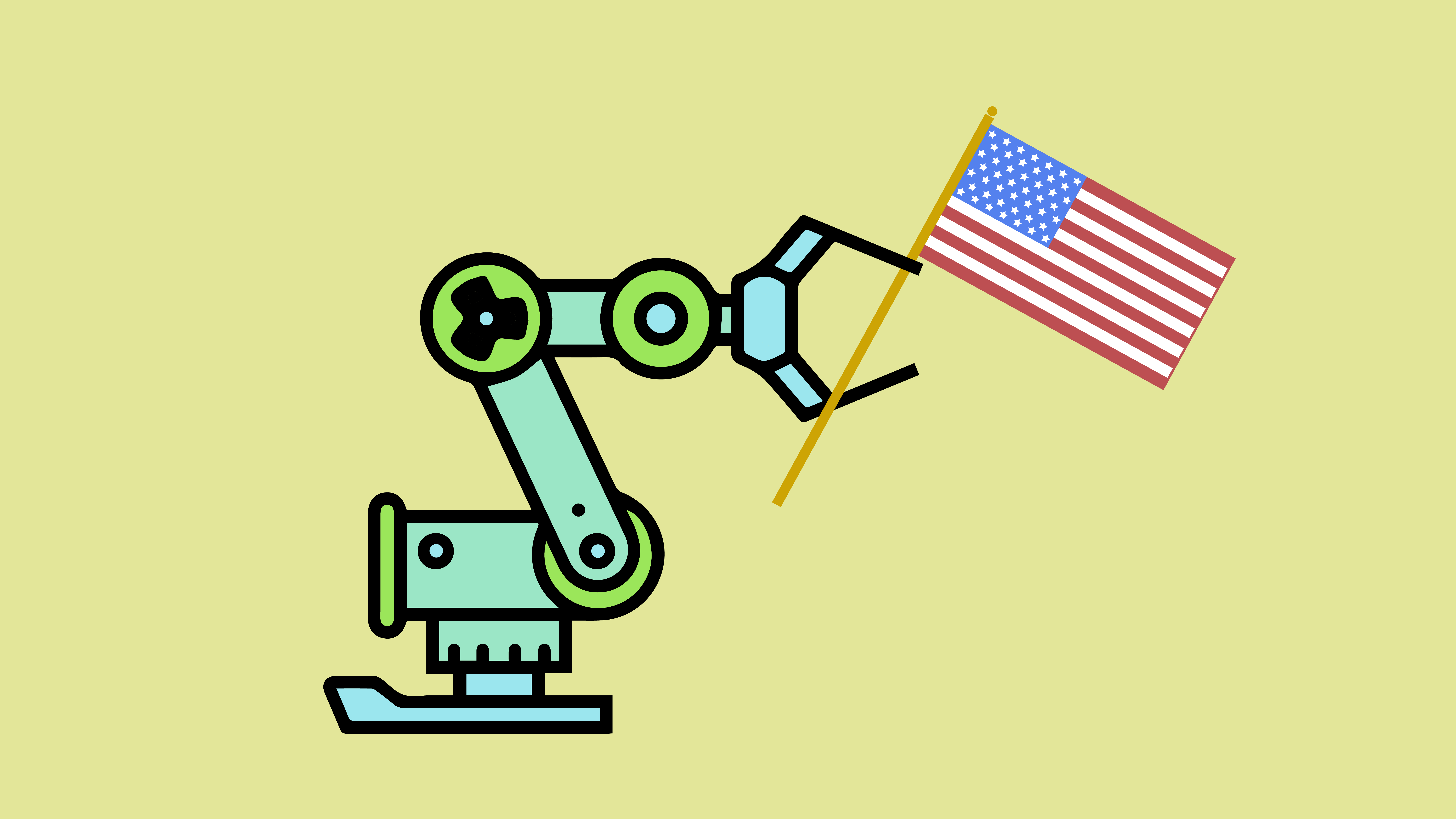The White House says a new AI task force will protect workers and keep America first

The Trump administration has announced a new task force that will promote an “America first” approach to artificial intelligence.
The Select Committee on Artificial Intelligence, convened under the National Science and Technology Council, was announced today by Michael Kratsios, deputy assistant to the president and deputy chief technology officer, at a White House event that brought together government leaders, representatives from numerous industries, and several prominent AI experts.
The meeting and the select committee signal that the administration takes the impact of artificial intellgence seriously. This has not always been apparent. In his campaign speeches, Trump suggested reviving industries that have already been overhauled by automation. The Treasury secretary, Steven Mnuchin, also previously said that the idea of robots and AI taking people’s jobs was “not even on my radar screen.”
Compared with the vast sums and bold initiatives announced by other nations, however, the new task force might also seem like a relatively small gesture toward promoting AI and planning for its impact (see “Here’s how the US should prepare for the age of artificial intelligence”).
It’s also hard to escape certain contradictions in the administration’s approach to AI. The government wants the US to capitalize on the technology and stay ahead of other nations, but it is reluctant to introduce an overarching plan or new funding. The administration has also introduced immigration rules that make it harder for international AI experts to work in the US, and signaled an intent to control research collaboration. Experts suggest that such a move will only harm the competitiveness of US AI research.
The administration argues it has already taken major steps to invest in such research, and to prepare for the technology’s impact on the economy. In a series of statements, the White House touted such moves as increased R&D funding since 2015, a budget request that references AI and autonomous systems, and an updated Federal Automated Vehicles Policy.
Kratsios did at least acknowledge that job losses resulting from AI are now a priority for the administration. “To a certain degree job displacement is inevitable,” he said. “But we can’t sit idle, hoping eventually the market will sort it out. We must do what Americans have always done: adapt.”
He also sought to highlight the capacity for AI to rejuvenate parts of America that have been disrupted by automation. He mentioned robotics startups in Pittsburgh, in an area dubbed Robotics Row. “Today, there is a rebirth. People are transforming once empty factories into the cradle of America’s industrial future,” he said. “There are dozens of organizations on Robotics Row employing hundreds of people—engineers, scientists, bookkeepers, administrators.”
The administration argues that steps already taken will help workers displaced by automation. President Trump previously issued an executive order creating new apprenticeship programs as an alternative to college degrees. Trump also signed a memorandum prioritizing science and technology education. These are relatively small steps, however, and experts say it is unclear how easy it will be to retrain displaced workers to do high-tech jobs.
As other governments have said they will do, Kratsios suggested that the government would look to open up more taxpayer data so that it can be fed to AI algorithms. “We can greatly improve that research by opening access to the government’s vast troves of taxpayer-funded data in ways that don’t compromise privacy or security,” he said.
He added that the government itself is investing in AI. He pointed to a pilot program at the General Services Administration designed to reduce the need for federal auditors, and noted that the National Institutes of Health is looking at how machine learning can improve cancer detection and treatment.
Deep Dive
Artificial intelligence
Large language models can do jaw-dropping things. But nobody knows exactly why.
And that's a problem. Figuring it out is one of the biggest scientific puzzles of our time and a crucial step towards controlling more powerful future models.
Google DeepMind’s new generative model makes Super Mario–like games from scratch
Genie learns how to control games by watching hours and hours of video. It could help train next-gen robots too.
What’s next for generative video
OpenAI's Sora has raised the bar for AI moviemaking. Here are four things to bear in mind as we wrap our heads around what's coming.
Stay connected
Get the latest updates from
MIT Technology Review
Discover special offers, top stories, upcoming events, and more.